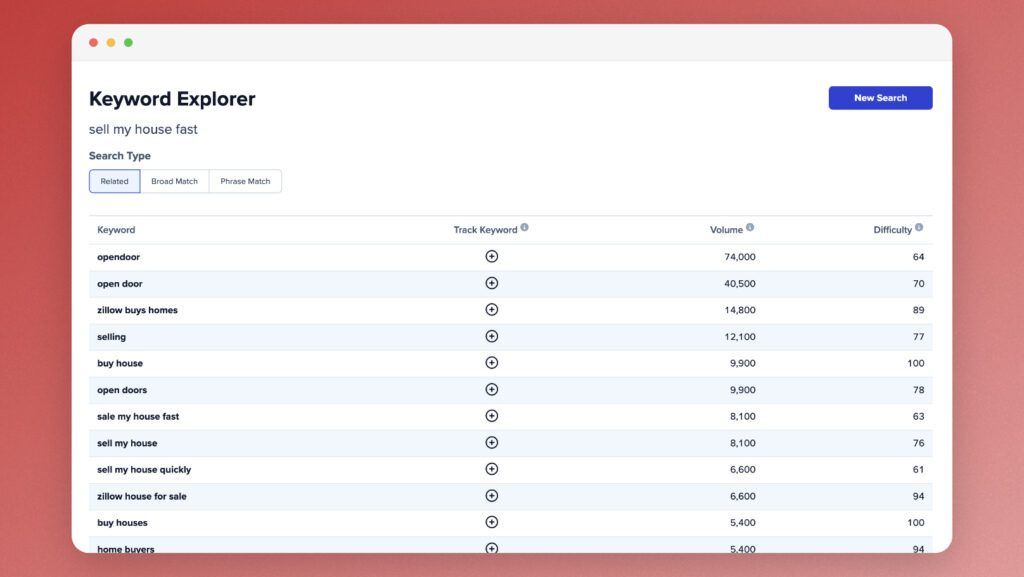Real Estate Investor Blog Post Template: Ultimate Guide to Creating High-Converting Content [2024]

As a real estate investor, your online presence can make or break your deal flow. While having a professional website (like those provided by Carrot) is crucial, the content you publish truly sets you apart from competitors and attracts motivated sellers, cash buyers, and other potential leads.
In this comprehensive guide, we’ll walk through everything you need to know about creating high-converting blog posts for your real estate investing business.
Why Blogging Matters for Real Estate Investors
According to HubSpot’s 2024 marketing statistics:
- Websites with blogs receive 55% more visitors
- Companies that blog generate 67% more leads
- Content marketing costs 62% less than traditional marketing while generating 3x the leads
For real estate investors specifically, blogging serves multiple critical purposes:
- Establishes authority and credibility in your market
- Improves local SEO rankings for motivated seller searches
- Provides valuable information to potential leads 24/7
- Creates content for social media and email marketing
- Builds trust before the first point of contact
Understanding Your Target Audience
Before writing your first blog post, you need to clearly define your audience segments:
Primary Audiences
- Motivated Sellers
- Facing foreclosure
- Inherited property
- Relocating quickly
- Dealing with problematic tenants
- Going through divorce
- Cash Buyers
- Local investors
- Out-of-state investors
- Fix-and-flip professionals
- Buy-and-hold investors
- Land/Mobile Home Sellers
- Rural property owners
- Mobile home park owners
- Distressed property owners
The Perfect Real Estate Investor Blog Post Template
Here’s your go-to template for creating high-converting blog posts:

1. Attention-Grabbing Title (60-65 characters)
- Include your primary keyword
- Use numbers when possible
- Create urgency or curiosity
Example: “5 Guaranteed Ways to Sell Your House Fast in [City] | 2024 Guide”
2. Introduction (150-200 words)
- Hook the reader with a relatable problem
- State the solution you’ll provide
- Include your primary keyword naturally
- End with a clear value proposition
3. Body Content (1500-2500 words)
- Use H2 and H3 headers for organization
- Include bullet points and numbered lists
- Add relevant statistics and data
- Incorporate local market information
- Use transition sentences between sections
4. Visual Elements
- Include at least 2-3 relevant images
- Add infographics when possible
- Use charts or graphs for data
- Include before/after photos of projects
5. Call-to-Action (CTA)
- Make it clear and compelling
- Offer something of value
- Use action-oriented language
- Include multiple CTAs throughout long posts
Leveraging AI and Keywords for Maximum Impact
Keyword Research Process

- Use tools like Carrot’s Keyword Research tool
- Local search terms
- Problem-specific keywords
- Long-tail opportunities
- Question-based searches
Need help with keyword research – I compiled over 3,000 ideas for you
AI Writing Tools
- ChatGPT for outline creation and idea generation
- Jasper.ai for content expansion
- Grammarly for editing and clarity
Content Optimization Tips
- Target featured snippets with clear definitions and lists
- Include FAQs section using real search queries
- Optimize meta descriptions and title tags
- Use internal linking to related content
Case Studies and Success Stories
Case Study #1: Local Market Domination
A real estate investor in Phoenix increased their motivated seller leads by 312% by:
- Publishing 2 blog posts per week
- Focusing on local neighborhood content
- Addressing specific seller pain points
- Using video content within blog posts
Case Study #2: Mobile Home Specialist
An investor focusing on mobile homes achieved 427 qualified leads in 6 months by:
- Creating detailed guides for mobile home sellers
- Addressing common mobile home sale challenges
- Including market-specific pricing information
- Offering free valuation tools
Implementation Guide and Next Steps
Weekly Content Calendar
Monday: Market analysis post Wednesday: Problem-solving content Friday: Success story or case study
Content Creation Process
- Keyword research (2 hours)
- Outline creation (1 hour)
- Writing first draft (3 hours)
- Editing and optimization (2 hours)
- Adding visuals and formatting (1 hour)
- Publishing and promotion (1 hour)
Tools and Resources Needed
- Carrot website platform
- Keyword research tool
- AI writing assistant
- Image editing software
- Analytics tracking
Conclusion
Creating high-quality blog content is no longer optional for real estate investors who want to stay competitive in 2024 and beyond. By following this template and implementing a consistent content strategy, you’ll build a powerful online presence that generates motivated seller leads 24/7.
Remember: The key to success is consistency and quality. Start with one well-written post per week, and scale up as you see results.